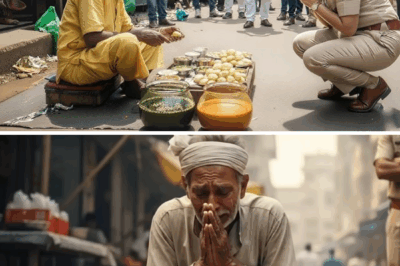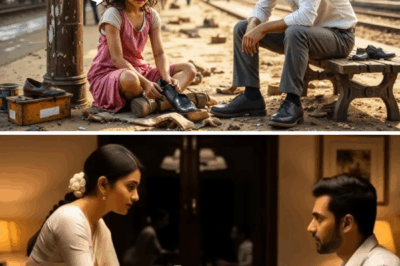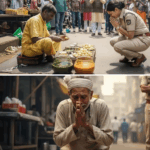Bollywood Bids Farewell to Legendary Actor Asrani: A Journey from Struggle to Stardom
Today, every cinema lover’s heart sank upon hearing the news – the iconic “jailer from the British era,” legendary actor Govardhan Asrani, is no longer with us. The great comedian of Bollywood breathed his last in Mumbai at the age of 84. What makes this loss even more emotional is that just hours before his passing, Asrani had wished his fans a Happy Diwali on social media. The news of his departure on the festival of lights has come as a massive shock to the film industry.
This is the story of an artist who carved his path through poverty and struggle. Weak in mathematics, Asrani changed the entire equation of Bollywood through his acting. Born on January 1 in Jaipur, Rajasthan, there is some confusion about whether it was 1940 or 1941, but it was in a middle-class Sindhi Hindu family. His father owned a carpet shop and hoped his son would join the business, but Asrani’s heart was set on the world of cinema.

His passion for films was so strong that he would skip school to watch movies. Despite his family’s attempts to restrict him and his father’s wish for him to pursue a government job, Asrani’s love for acting prevailed. Driven by this passion, he secretly boarded a train from Gurdaspur to Mumbai, seeking help from music director Naushad, but to no avail. Even when he presented his FTII certificate in hopes of getting work, people mocked him, saying acting didn’t require a certificate.
After two years of struggle, Asrani returned to Jaipur and helped with the family business, but his heart wasn’t in it. In 1960, he saw an advertisement for an acting course at Pune’s FTII and enrolled in its first batch, completing the course between 1964 and 1966. Despite holding a diploma, finding work was still tough. His first role as a hero was in a Gujarati film, and he had a small part in the Hindi film “Heere Kaanch Ki Chudiyan.” When his family saw him in a song from the film “Seema,” they brought him back home, but he soon returned to Mumbai.
To make ends meet, Asrani worked as an acting teacher at FTII for six years, commuting between Pune and Mumbai every Friday. During this time, he met director Hrishikesh Mukherjee, who eventually cast him in “Guddi” after a memorable audition. Asrani played a young man aspiring to be a hero but ending up as a junior artist. This role marked the beginning of a long list of films, including “Satyakam,” “Mere Apne,” “Bawarchi,” “Namak Haraam,” “Chupke Chupke,” “Alaap,” and “Tapasya.”
Asrani shared a deep bond with Hrishikesh Mukherjee, who once wrote “Asrani Mukherjee” on paper, signifying Asrani was like a son to him. He closely witnessed the rise and fall of two superstar friends – Rajesh Khanna and Amitabh Bachchan. Asrani acted in over 25 films with Rajesh Khanna and saw firsthand how Khanna was revered like a god. He also observed the tension between Khanna and Bachchan during the filming of “Namak Haraam,” which marked the beginning of Bachchan’s “Angry Young Man” era and the decline of Khanna’s stardom.
Asrani’s career reached immortality with the 1975 film “Sholay,” where his role as the eccentric jailer became iconic. His famous dialogue, “Hum Angrezon ke zamane ke jailer hain” (“I am the jailer from the British era”), remains memorable to this day. The character was inspired by unseen photographs of Hitler and his unique voice modulation, which Asrani learned from his acting teacher, Roshan Taneja, and Hollywood actor Jack Lemmon.
Apart from comedy, Asrani excelled in negative and serious roles in films like “Kaoshish,” “Chaitali,” and “Khoon Pasina.” He set a record by acting in 101 films in the 1970s and 107 films in the 1980s, working with stalwarts like Rajesh Khanna, B.R. Chopra, Shakti Samanta, Manmohan Desai, and Basu Chatterjee. He won the Filmfare Award for Best Supporting Actor for “Aaj Ki Taaza Khabar” and “Balika Vadhu,” and the Shama Sushma Award for “Anhonee.”
Asrani also directed films, starting with the Gujarati film “Ahmedabad No Rickshawalo” in 1974, with its title track sung by Kishore Kumar. Inspired by his own life, he directed the Hindi film “Chalti Ka Naam Gaadi Hero Banane,” which received good critical ratings. Despite advice that directing might impact his credibility as an actor, he continued making films like “Salaam Memsaab,” “Hum Nahin Sudhrenge,” “Dil Hi To Hai,” and his last directorial, “Udaan” in 1997.
His personal life was equally beautiful. Asrani met actress Manju Bansal on the sets of “Aaj Ki Taaza Khabar” and “Namak Haraam,” and their friendship blossomed into love and marriage. Manju Bansal acted in over 10 films, and the couple worked together in several movies, including their home production “Hum Nahin Sudhrenge.” They are survived by their son Naveen Asrani, a dentist in Ahmedabad, and daughter Laveena Asrani.
Even as the era of action films reduced the demand for comedians in the 1980s and 90s, Asrani adapted, working in David Dhawan’s comedies and Priyadarshan’s hits like “Hera Pheri,” “Garam Masala,” “Bhagam Bhag,” “Chup Chup Ke,” and “Malamaal Weekly.” He was also seen in Rohit Shetty’s “Golmaal” series and “Bol Bachchan,” as well as popular web series and TV shows like “Permanent Roommates” and “Partners Trouble Ho Gayi Double.” In 2024, he appeared in the Bagheli film “Kunwarpur.”
Asrani always believed in professionalism and focused on work over parties and gossip, believing that creative energy should not be wasted. Known for his philanthropy and humility, he leaves behind a legacy of laughter and inspiration.
At 84, Asrani has left an immense legacy in acting, rising from a carpet shop in a small lane to ruling the silver screen, redefining comedy, and making two generations laugh. As we bid him farewell, his iconic dialogue echoes in our hearts: “Hum Angrezon ke zamane ke jailer hain.” Asrani, your work, your laughter, and your legacy will live on forever. Goodbye.
—
News
क्यों भीड़ के बीच अचानक झुक गईं IPS मैडम एक गोलगप्पे वाले के सामने?
साहसी एसपी अंजना राठौर की कहानी सुबह का समय था। पीली साड़ी पहने, बिल्कुल गांव की आम महिलाओं जैसी दिखने…
सुधा की कहानी: संघर्ष, प्रेम और उम्मीद
सुधा की कहानी: संघर्ष, प्रेम और उम्मीद एक सुबह एसडीएम मैडम नंदिता अपने बड़े भाई आदित्य के साथ कपड़े खरीदने…
SDM मैडम की भाभी स्टेशन पर जूते पोलिश करते हुए मिली…… फिर जो हुआ सुनकर तंग रहे जाओगे……….
सुधा की कहानी: संघर्ष, प्रेम और उम्मीद एक सुबह एसडीएम मैडम नंदिता अपने बड़े भाई आदित्य के साथ कपड़े खरीदने…
रोहन और सैमुअल : इंसानियत, पूर्वाग्रह और सच्चाई की कहानी
रोहन और सैमुअल : इंसानियत, पूर्वाग्रह और सच्चाई की कहानी शिकागो शहर की चमकती सड़कों पर एक भारतीय युवक रोहन…
अमेरिका में ब्लैक अमेरिकी की हैल्प करने पर पुलिस भारतीय युवक को उठा ले गयी , जब सच सामने आया तो
रोहन और सैमुअल : इंसानियत, पूर्वाग्रह और सच्चाई की कहानी शिकागो शहर की चमकती सड़कों पर एक भारतीय युवक रोहन…
Today, every cinema lover’s heart sank upon hearing the news – the iconic “jailer from the British era,” legendary actor Govardhan Asrani, is no longer with us.
Bollywood Bids Farewell to Legendary Actor Asrani: A Journey from Struggle to Stardom Today, every cinema lover’s heart sank upon…
End of content
No more pages to load








